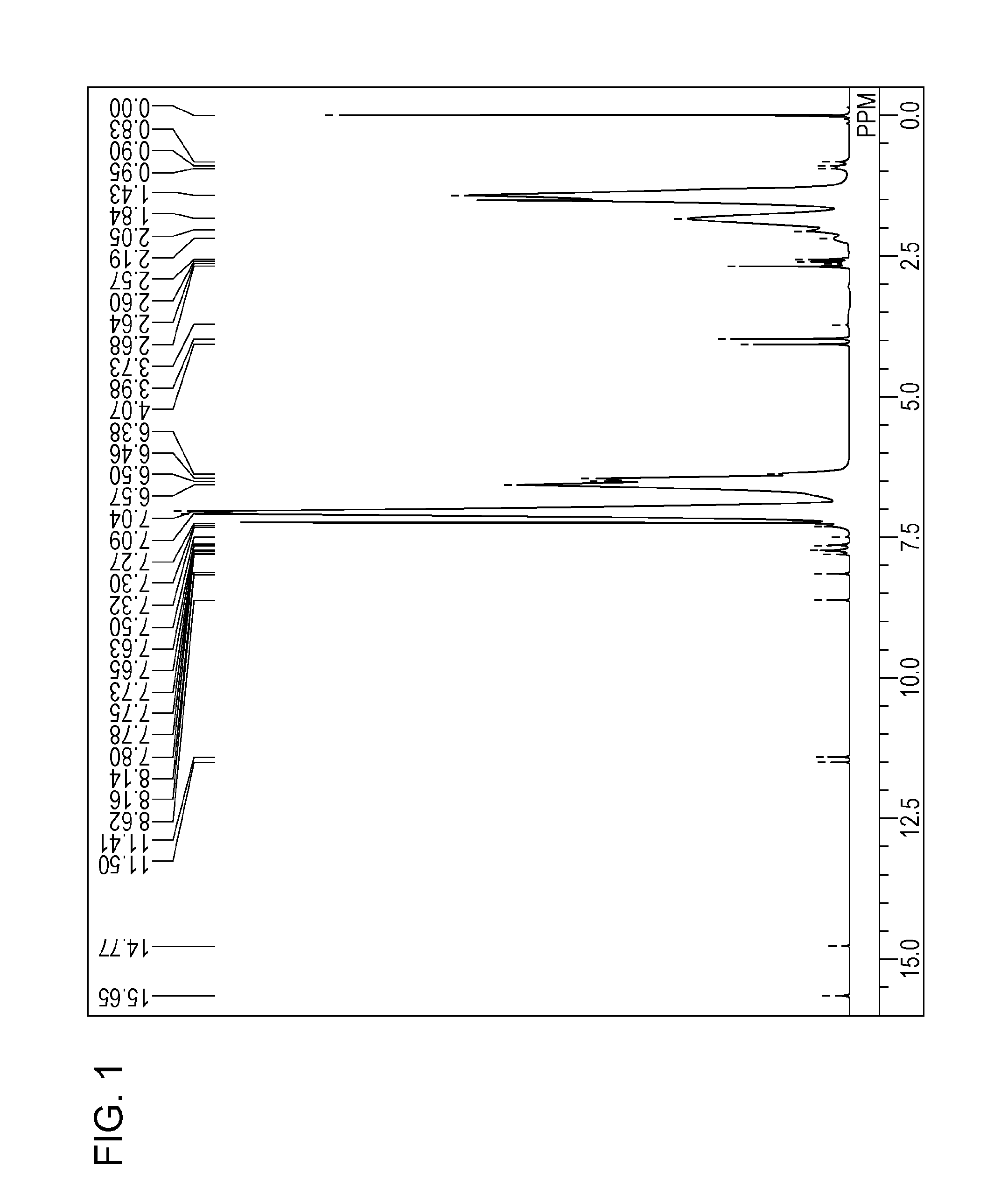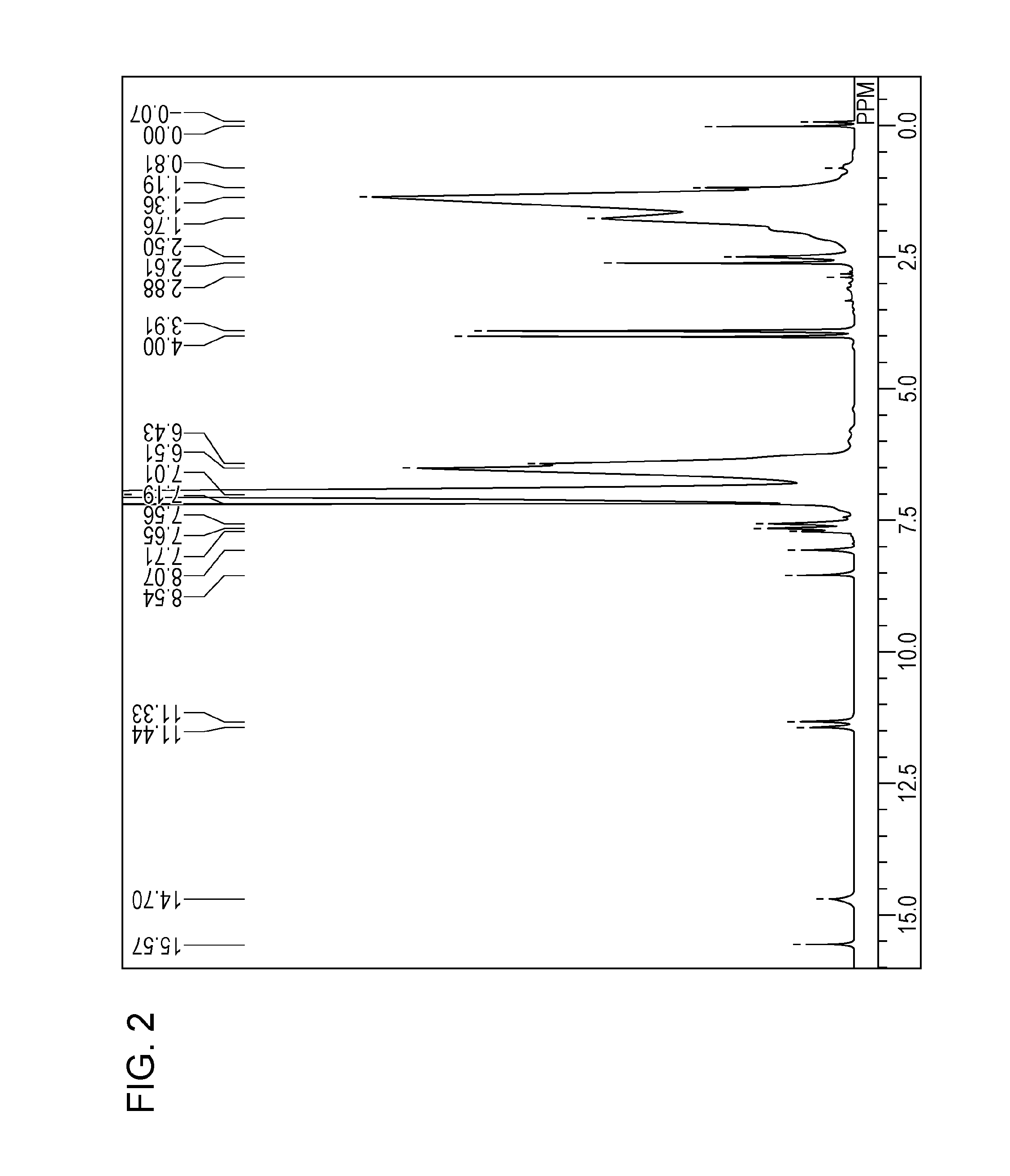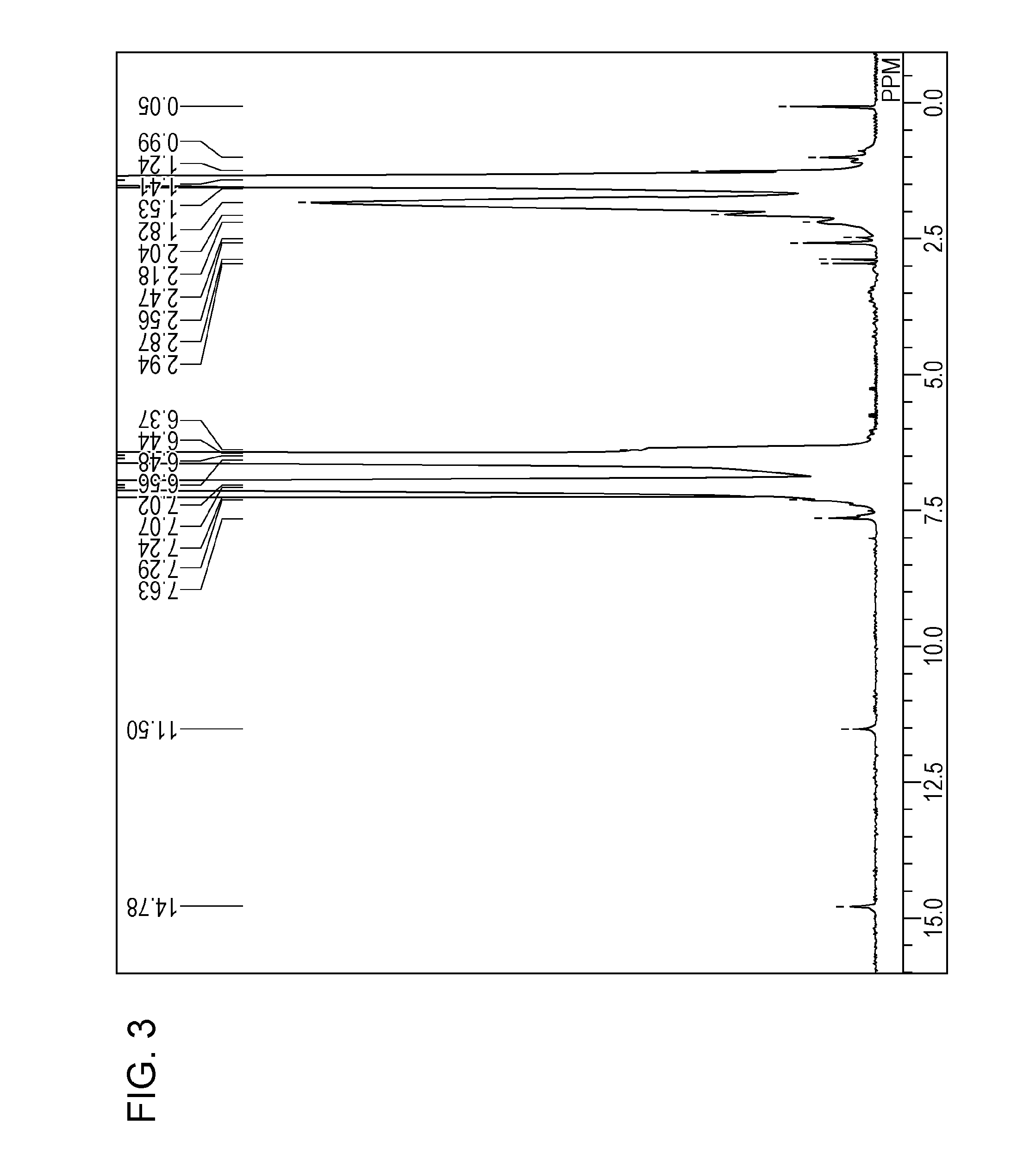Magenta toner containing compound having AZO skeleton
a technology of azo skeleton and toner, which is applied in the field of magenta toner, can solve the problems of insufficient dispersion of pigment, inability to charge stablely, and failure of dispersion, and achieve the effects of suppressing fogging, high coloring power, and improving dispersibility of magenta pigment in binder resin
- Summary
- Abstract
- Description
- Claims
- Application Information
AI Technical Summary
Benefits of technology
Problems solved by technology
Method used
Image
Examples
example 1
[0193]A compound having an azo skeleton was obtained through the following method.
Production Example of Compound (116)
[0194]A compound (116) having an azo skeleton represented by structural formula below was produced by the following scheme.
[0195]
[0196]First, 3.11 parts of p-nitroaniline (29) was added to 30 parts of chloroform, the mixture was cooled with ice to 10° C. or lower, and 1.89 parts of diketene (30) was added thereto, followed by stirring for 2 hours at 65° C. After completion of the reaction, chloroform extraction and condensation were performed to obtain 4.70 parts (yield: 94.0%) of a compound (31).
[0197]Next, 40.0 parts of methanol and 5.29 parts of concentrated hydrochloric acid were added to 4.25 parts of dimethyl 2-aminoterephthalate (32) and the mixture was cooled with ice to 10° C. or lower. To the resulting solution, 2.10 parts of sodium nitrite dissolved in 6.00 parts of water was added and the reaction was carried out at the same temperature for 1 hour. Next, ...
example 2
[0254]A magenta pigment dispersion containing a magenta pigment and a compound having an azo skeleton was prepared by the following method in a toner production process that involves a suspension polymerization method.
Preparation Example 1 of Magenta Pigment Dispersion
[0255]Mixed were 30.0 parts of a pigment represented by formula (52) below serving as a colorant, 3.0 parts of the compound (101) having an azo skeleton structure, 180 parts of styrene as a water-insoluble solvent, and 130 parts of glass beads (1 mm in diameter). The resulting mixture was dispersed in an attritor (produced by Nippon Coke & Engineering Co., Ltd.) for 3 hours and filtered through a mesh to obtain a magenta pigment dispersion (DIS1).
[0256]
Preparation Example 2 of Magenta Pigment Dispersion
[0257]Magenta pigment dispersions (DIS2) to (DIS79) were obtained as in Preparation Example 1 of magenta pigment dispersion except that the compound (101) having an azo skeleton structure was changed to compounds (102) t...
preparation example 3
of Magenta Pigment Dispersion
[0258]Magenta pigment dispersions (DIS80), (DIS81), and (DIS82) were obtained as in Preparation Example 1 of magenta pigment dispersion except that the pigment represented by formula (52) above was changed to pigments represented by formulae (53), (54), and (55) below.
[0259]
PUM
| Property | Measurement | Unit |
|---|---|---|
| temperature | aaaaa | aaaaa |
| temperature | aaaaa | aaaaa |
| molecular weight distribution | aaaaa | aaaaa |
Abstract
Description
Claims
Application Information
 Login to View More
Login to View More - R&D
- Intellectual Property
- Life Sciences
- Materials
- Tech Scout
- Unparalleled Data Quality
- Higher Quality Content
- 60% Fewer Hallucinations
Browse by: Latest US Patents, China's latest patents, Technical Efficacy Thesaurus, Application Domain, Technology Topic, Popular Technical Reports.
© 2025 PatSnap. All rights reserved.Legal|Privacy policy|Modern Slavery Act Transparency Statement|Sitemap|About US| Contact US: help@patsnap.com



